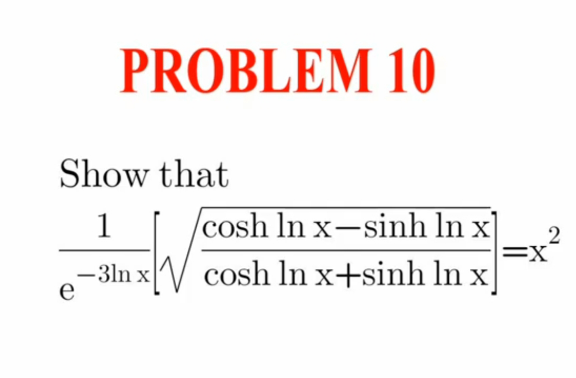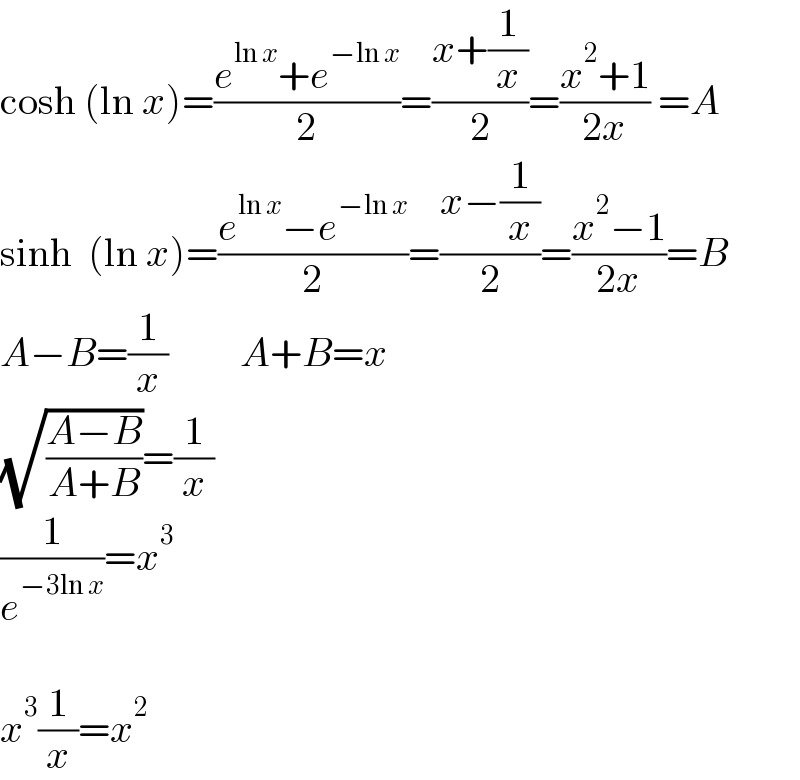Question Number 177812 by Spillover last updated on 09/Oct/22

Answered by JDamian last updated on 09/Oct/22

$$\mathrm{cosh}\:\left(\mathrm{ln}\:{x}\right)=\frac{{e}^{\mathrm{ln}\:{x}} +{e}^{−\mathrm{ln}\:{x}} }{\mathrm{2}}=\frac{{x}+\frac{\mathrm{1}}{{x}}}{\mathrm{2}}=\frac{{x}^{\mathrm{2}} +\mathrm{1}}{\mathrm{2}{x}}\:={A} \\ $$$$\mathrm{sinh}\:\:\left(\mathrm{ln}\:{x}\right)=\frac{{e}^{\mathrm{ln}\:{x}} −{e}^{−\mathrm{ln}\:{x}} }{\mathrm{2}}=\frac{{x}−\frac{\mathrm{1}}{{x}}}{\mathrm{2}}=\frac{{x}^{\mathrm{2}} −\mathrm{1}}{\mathrm{2}{x}}={B} \\ $$$${A}−{B}=\frac{\mathrm{1}}{{x}}\:\:\:\:\:\:\:\:\:{A}+{B}={x} \\ $$$$\sqrt{\frac{{A}−{B}}{{A}+{B}}}=\frac{\mathrm{1}}{{x}} \\ $$$$\frac{\mathrm{1}}{{e}^{−\mathrm{3ln}\:{x}} }={x}^{\mathrm{3}} \\ $$$$ \\ $$$${x}^{\mathrm{3}} \frac{\mathrm{1}}{{x}}={x}^{\mathrm{2}} \\ $$
Commented by Spillover last updated on 09/Oct/22

$$\mathrm{nice}\:\mathrm{solution} \\ $$
